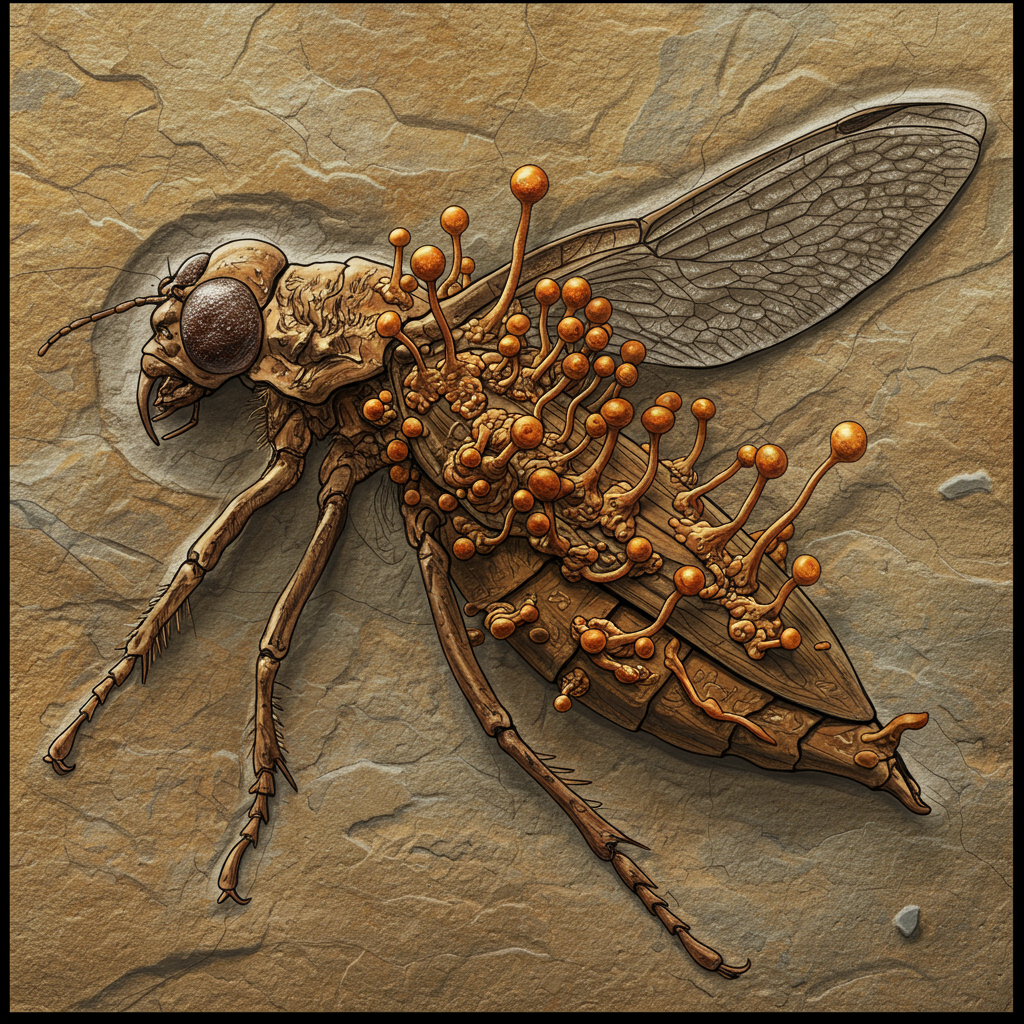Forget post-apocalyptic fiction; the reality of “zombie fungi” infecting insects is ancient – far more ancient than scientists previously thought. New fossil discoveries reveal that these gruesome parasites have been manipulating and killing insects for a staggering 99 million years, a finding that pushes back their known history by millions of years.
What are Zombie Fungi?
Modern Ophiocordyceps fungi are infamous for their ability to hijack the nervous systems of insects like ants and flies. An infected ant might be compelled to leave its colony, climb a plant stem, and lock its jaws onto a leaf before the fungus erupts from its body, releasing spores to infect new victims. This chilling cycle even inspired the popular game and TV series The Last of Us.
These fungi, broadly classified as entomopathogenic (insect-killing) fungi, are known to infect a wide variety of insects and arthropods today, playing a significant role in regulating their populations.
The Rare Discovery in Amber
Finding evidence of these soft-bodied fungi in the fossil record is incredibly rare. Their delicate structures don’t typically preserve well, especially when living inside their hosts. That’s why paleontologist Yuhui Zhuang’s find was a remarkable stroke of luck.
While sifting through specimens in a university basement, Zhuang discovered a droplet of 99-million-year-old amber trapping an ant pupa. Something was sticking out of its back. Initially thinking it was a developing wing, a 3D scan revealed the truth: a fungus erupting from the pupa’s body.
Unearthing Ancient Parasites
This ancient fungus bore striking similarities to modern Ophiocordyceps, featuring similarly shaped spores and a dome-like structure emerging from the host. A subsequent search uncovered another fossil in amber from the same period: a fly also infected by a similar fungus.
These stunning fossils, both dated to roughly 99 million years old from the Mid-Cretaceous period, represent two newly described ancient fungal species: Paleoophiocordyceps gerontoformicae, found on the ant pupa, and Paleoophiocordyceps ironomyiae, infecting the fly. This finding marks some of the oldest evidence of fungi infecting insects discovered to date.
A Glimpse into Ancient Ecosystems
These 99-million-year-old specimens demonstrate that the ancestors of Ophiocordyceps were already infecting multiple insect groups during the age of dinosaurs, explains paleontologist Conrad Labandeira. The discovery, published in Proceedings of the Royal Society B, pushes back the confirmed timeline for this parasitic relationship significantly, suggesting these fungi and their insect hosts have been locked in a long evolutionary dance, or coevolution, for millions of years.
Professor Edmund Jarzembowski, a co-author from the Natural History Museum, emphasizes the rarity and significance, stating these are some of the oldest examples found globally and provide crucial data points for understanding the deep history of insect-fungal parasitism.
Not All Victims Controlled
While modern zombie fungi are known for manipulating behavior, the researchers point out an important detail: the fossilized ant was a pupa. Ant pupae cannot move, so the fungus wasn’t manipulating this individual’s behavior. Instead, the pupa was likely removed from the nest by an adult worker ant that detected the infection – a grisly form of colony hygiene. Once outside the nest, the fungus could still mature and release its spores.
Ecological Impact Through Deep Time
Entomopathogenic fungi are vital regulators of insect populations today. This ancient discovery supports the idea that Paleoophiocordyceps and its relatives played a similar ecological role 99 million years ago, potentially influencing the dynamics of ancient insect communities by causing lethal infections. Just as their living counterparts serve as important population regulators today, these ancient fungi likely played a similar role during the Mid-Cretaceous.
These remarkably preserved amber fossils offer a rare window into the deep past of a fascinating, and somewhat terrifying, parasitic relationship. They underscore the incredible persistence of certain ecological strategies over vast stretches of geologic time and provide crucial data for understanding the long evolutionary history of fungi and their insect hosts.




